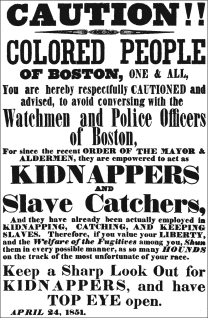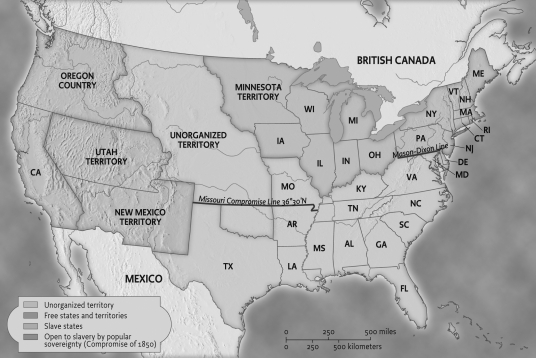A) Mexico refused to trade with the United States.
B) Native Americans blocked ports in southern California.
C) Gaining valuable trade ports tripled trade with China by 1860.
D) The United States now had to consider going to war with Great Britain for control of the Pacific Coast.
Correct Answer

verified
Correct Answer
verified
Multiple Choice
From 1848 to 1860, most of the railroad construction was in which region?
A) Northeast.
B) Southeast.
C) Southwest.
D) Midwest.
Correct Answer

verified
Correct Answer
verified
Multiple Choice
Which of the following statements related to ethnicity was true in California in the 1850s?
A) Thousands of Indian children were declared orphans and treated as slaves.
B) The state recognized more than 15,000 African-Americans as slaves of whites who had moved there.
C) Men of all backgrounds, except those from China, were allowed to vote and serve on juries.
D) Indian communities prospered by renting land and selling supplies to gold miners.
Correct Answer

verified
Correct Answer
verified
Multiple Choice
When Democrats demanded the "reannexation" of Texas in 1844, they:
A) implied that Texas had once been part of the United States through the Louisiana Purchase.
B) were consciously appealing to northern Whigs.
C) were seeking to take the slavery issue out of the presidential campaign.
D) neglected to say anything about the status of Oregon.
Correct Answer

verified
A
Correct Answer
verified
Multiple Choice
"Fifty-four forty or fight" referred to demands for American control of:
A) Texas.
B) Oregon.
C) California.
D) Mexico.
Correct Answer

verified
Correct Answer
verified
Multiple Choice
The term "Californios" referred in the 1830s and 1840s to ________ in California.
A) Mexican cattle ranchers
B) the Indian inhabitants
C) U.S.-born immigrants
D) any individual
Correct Answer

verified
Correct Answer
verified
Multiple Choice
The opening of Japan to United States trade led to what?
A) Japan created its own minstrel shows.
B) Other nations wanted to carve up Japanese territory.
C) Japan became a modernized military power.
D) The United States became much less interested in China.
Correct Answer

verified
Correct Answer
verified
Multiple Choice
Slave Catcher Poster (1851)
 -Why did tensions remain after the Compromise of 1850?
-Why did tensions remain after the Compromise of 1850?
A) The Supreme Court ruled the compromise unconstitutional.
B) Fighting over slavery had begun to spread into new territories.
C) The South took great liberties in the enforcement of the fugitive slave law.
D) The slavery issue had not been adequately resolved by the compromise.
Correct Answer

verified
Correct Answer
verified
Multiple Choice
Why did slavery become more central to American politics in the 1840s?
A) The Methodist Church, the nation's largest denomination, called on all its members to free their slaves.
B) Territorial expansion raised the question of whether new lands should be free or slave.
C) Members of the abolitionist Republican Party, formed in 1844, insisted on debating slavery.
D) President John Tyler's antislavery policies caused a major proslavery backlash led by John C. Calhoun.
Correct Answer

verified
Correct Answer
verified
Multiple Choice
The Lecompton Constitution was the:
A) antislavery constitution adopted in Nebraska.
B) proslavery constitution proposed for Kansas.
C) pro-secession constitution of North Carolina.
D) Missouri constitution preferred by Abraham Lincoln.
Correct Answer

verified
Correct Answer
verified
Essay
Explain how ideological and economic differences between the North and South caused political conflict between the two regions during the period 1844 to 1860.
Correct Answer

Answered by ExamLex AI
The ideological and economic differences between the North and South during the period 1844 to 1860 were significant factors that led to political conflict between the two regions.
Ideologically, the North and South had differing views on the issue of slavery. The North was increasingly opposed to the institution of slavery, viewing it as morally wrong and incompatible with the principles of freedom and equality. On the other hand, the South relied heavily on slavery for its agricultural economy, and many in the region defended the institution as essential to their way of life.
Economically, the North was experiencing rapid industrialization and urbanization, leading to a more diverse and dynamic economy. In contrast, the South's economy was primarily based on agriculture, particularly cotton production, and relied heavily on slave labor. This economic disparity led to conflicting interests between the two regions, particularly in terms of trade policies and tariffs.
These ideological and economic differences manifested in political conflicts over a range of issues, including the expansion of slavery into new territories, the balance of power in Congress, and the rights of states to determine their own laws regarding slavery. The Compromise of 1850 and the Kansas-Nebraska Act of 1854 were attempts to address these conflicts, but ultimately only served to further polarize the North and South.
The growing tensions eventually led to the secession of Southern states and the outbreak of the Civil War in 1861. The political conflict between the North and South during this period was rooted in deep-seated ideological and economic differences, and ultimately culminated in a devastating and transformative conflict in American history.
Correct Answer
Answered by ExamLex AI
Multiple Choice
Who wrote On Civil Disobedience as a response to the U.S. war with Mexico?
A) Abraham Lincoln.
B) Ralph Waldo Emerson.
C) Henry David Thoreau.
D) David Wilmot.
Correct Answer

verified
Correct Answer
verified
Multiple Choice
South Carolina’s Ordinance of Secession (1860) We affirm that these ends for which this Government was instituted have been defeated, and the Government itself has been made destructive of them by the action of the non-slaveholding States. Those States have assumed the right of deciding upon the propriety of our domestic institutions; and have denied the rights of property established in fifteen of the States and recognized by the Constitution . . . For twenty-five years this agitation has been steadily increasing. . . . A geographical line has been drawn across the Union, and all the States north of that line have united in the election of a man to the high office of President of the United States, whose opinions and purposes are hostile to slavery . . . The guaranties of the Constitution will then no longer exist; the equal rights of the States will be lost. The slaveholding States will no longer have the power of self-government, or self-protection, and the Federal Government will have become their enemy. Adopted December 24, 1860 -The concerns raised in this passage by the leaders of South Carolina
A) were shared by many people in the North and West as well.
B) were ignored by the incoming Lincoln administration.
C) had been debated by politicians for several decades, resulting in a series of compromises.
D) had been dismissed as insignificant following the demise of the Whig Party.
Correct Answer

verified
Correct Answer
verified
Multiple Choice
The Dred Scott decision of the U.S. Supreme Court:
A) declared that Congress could not ban slavery from territories.
B) endorsed the free soil policy of the Republicans.
C) backed the idea of popular sovereignty.
D) freed Dred and Harriet Scott.
Correct Answer

verified
Correct Answer
verified
Multiple Choice
What occurred in 1848 in Europe?
A) There were revolutions against monarchies.
B) The unification of Germany occurred.
C) Italian kingdoms reunified.
D) Napoleon escaped, created an army, and attacked England.
Correct Answer

verified
A
Correct Answer
verified
Multiple Choice
The Republican free labor ideology:
A) convinced northerners that Catholic immigrants posed a more significant threat than the southern slave power.
B) led to the argument by Abraham Lincoln and William Seward that free labor and slave labor were essentially incompatible.
C) owed its origins to Abraham Lincoln's reemergence in the wake of the Kansas-Nebraska Act.
D) accepted southerners' point that slavery protected their liberty, but explained that the economic benefits of free labor would outweigh the damage abolition would do to southern liberty.
Correct Answer

verified
Correct Answer
verified
Multiple Choice
Who was responsible for the 1856 Pottawatomie Creek Massacre in Kansas and led the raid on the federal arsenal at Harpers Ferry, Virginia, in 1859?
A) Frederick Douglass.
B) Joseph Lane.
C) John Brown.
D) Henry Ward Beecher.
Correct Answer

verified
Correct Answer
verified
Multiple Choice
According to John L. O'Sullivan's Democratic Review, what was the key to the history of nations and the rise and fall of empires?
A) Race.
B) Democracy.
C) Economic freedom.
D) Slavery.
Correct Answer

verified
Correct Answer
verified
Multiple Choice
Map: The Compromise of 1850
 -The compromise depicted in the map was supported by which of the following groups?
-The compromise depicted in the map was supported by which of the following groups?
A) those who wished to remain isolationist
B) northerners who wanted to preserve the union
C) those who wished to abolish slavery
D) southerners who wanted to protect their interests
Correct Answer

verified
Correct Answer
verified
Multiple Choice
Which 1854 document called for the United States to seize Cuba?
A) The Monroe Doctrine.
B) The Ostend Manifesto.
C) The Wilmot Proviso.
D) The Webster-Ashburton Treaty.
Correct Answer

verified
Correct Answer
verified
Showing 1 - 20 of 87
Related Exams